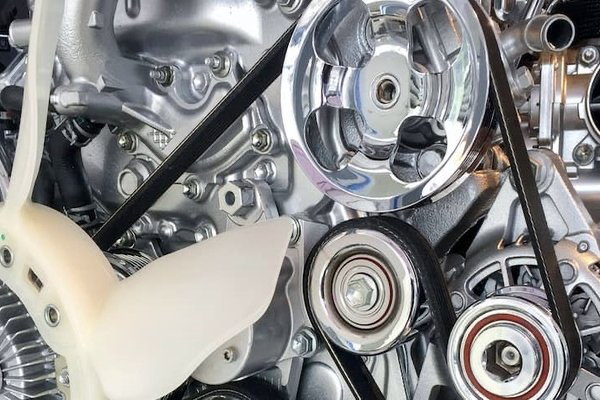Inspecting Car Belts and Hoses for a Trouble-Free Journey

Having a car means you gotta take care of it regularly to make sure it runs smoothly and lasts long. Now, we all know engines get all the attention, but we can't forget about the unsung heroes—the belts and hoses. Do you know what to look for and how to spot the bad stuff on your car’s belts and hoses? Here’s a guide
Why do you need to inspect regularly?
Just like the heart and veins in our bodies, car belts, and hoses play a vital role in the proper functioning of your vehicle. Inspecting them regularly can help identify potential issues, prevent unexpected breakdowns, and save you from costly repairs down the road. By investing a little time in maintenance, you can ensure a trouble-free journey and extend the lifespan of your car.
How should you do the inspection?
Start by locating the release latch inside your car and popping the hood. Secure it with the prop rod to provide easy access to the engine compartment.
Begin by visually inspecting the belts and hoses for any signs of wear, damage, or leaks. Look for cracks, fraying, bulges, or loose connections. Ensure that all belts are properly tensioned and securely in place.
For serpentine belts, apply pressure on the belt with your finger. It should have just the right amount of tension—firm but not too tight or too loose. If the belt feels loose or shows signs of excessive wear, it may need to be replaced.
Take a look at your radiator hoses, heater hoses, and other coolant hoses to see if there are any leaks, cracks, or bulges. Give them a gentle squeeze to see if they feel spongy or have any soft spots. If they seem brittle or show signs of wear and tear, it's probably a good idea to think about getting them replaced.
Ensure that hose clamps are securely tightened and free from corrosion. Loose clamps can lead to leaks and compromise the performance of the cooling system.
What to look out for
If you hear high-pitched noises when starting your car or while the engine is running, it may indicate a worn-out or loose belt.
A sudden increase in engine temperature can point to a faulty or leaking hose, leading to coolant loss. Address this issue promptly to prevent engine damage.
If you spot puddles of fluid underneath your car or notice a loss of coolant, it could be a sign of a damaged hose or connection. It's important to take care of these leaks right away to prevent your engine from overheating or other potential issues. Don't ignore it, tackle the problem as soon as you can!
If your engine experiences a power loss, stalling, or irregular idling, it could be a result of a malfunctioning belt or hose affecting the performance of vital components like the alternator, power steering, or air conditioning.
Final thoughts
Keeping an eye on your car's belts and hoses is a small but super important task if you want a smooth and hassle-free ride. By catching problems early and taking care of them, you'll keep your car running smoothly and save yourself from bigger headaches down the road. So, get ready to roll up your sleeves, grab a flashlight, and give those belts and hoses the TLC they deserve. Your car will definitely appreciate it, and you'll have peace of mind on your journeys.